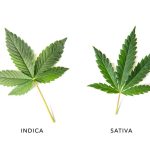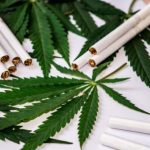🔥 Website for Sale - Contact Us
Pruning is the most effective way to increase yield and direct the plant’s growth energy to flower development. Aside from pruning to increase yield, it also helps to manage plants size and grow patterns.
Managing plant size for indoor growers is extremely important because of the limited available real estate. Pruning helps by creating more elbow room for each plant to either make space for more plants or reduce the risk of mold or mildew formation.
Removing branches that do not contribute to flower development encourages the plant to grow sideways and ensures that all the essential leaves get enough light. In nature, all these essential growth factors are balanced and do not need human intervention to produce great crops.
However, trimming useless branches in an indoor environment helps growers to maximize the plant’s flower growing ability to produce the highest quality crop to the plant’s ability.
Today we are looking at why pruning is important and the best trimming techniques used by professional cultivators. We are also going to take a deep dive into what common mistakes to avoid to help you execute the techniques more effectively.
The basics of pruning cannabis
Pruning cannabis involves the removal or reduction of plant parts that are not essential for growth or flower production. Trimming these non essentially branches or leaves in moderation improves yield size and quality in multiple ways.
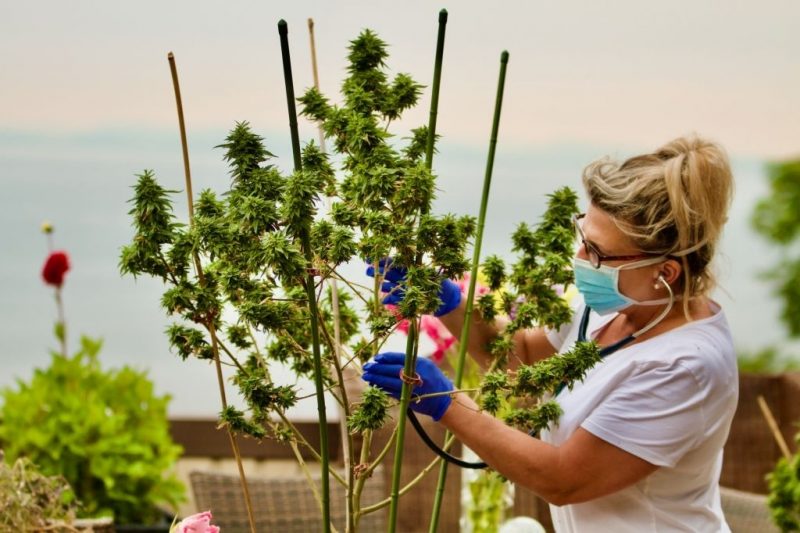
1. Plant use fewer resources
Over the cause of the cannabis plant’s life cycle, there are many leaves and parts of the plant that will die because of how to plant allocates its growth resources. Although the plant restricts growth energy for these dying branches or leaves, there is still growth energy spent in an attempt to keep these limps alive for long as possible. The intentional removal of these plant parts that are destined to perish reserves precious growth energy to spend on flower development.
Apart from that pruning cannabis helps the plant to redirect its growth efforts into boosting THC development and yield size, it also can save you a wad of cash by reducing the resources needed to grow the plants. A smaller plant needs less nutrition and effort from essential environmental equipment to manage indoor climate that might be caused by plant density.
During the nighttime, plants interact in their environment similarly to humans in that they absorb oxygen and expel carbon dioxide. Carbon dioxide is known to be one of the biggest contributors to high humidity in a grow tent and requires equipment to work harder and more often to keep the environmental balance.
These micro-savings of resources all add up at the end of the day to lower the cost of growing quality crops.
2. Maximize indoor grow space
One of the biggest problems all indoor cultivators experience is restricted grow space, as a result, this led growers to develop innovative ways to maximize limited small grow spaces.
If cannabis plants are felt unpruned all the plants in the crop will end up a different size which is especially a problem since most grow tents can only accommodate plants less than 3-4 feet in height. Pruning essentially trains the plant to stay short but grow in width instead for optimal light absorption that is essential to create growth energy.
Once you factor in all the elements that required space inside the grows tent, you’ll notice a reduction of approximately 25% of available growth space. Apart from the equipment hanging from the tent ceiling, the actual pots of the plants can also occupy a big chunk of the floor space.
While most of these elements are essential and can not be removed, properly grooming your plants can free up vital elbow room for plant maintaining tasks or even a couple more plants. During the crop growing cycle cultivators often need to move ventilation fans around inside the grow space and can be a pain in the butt when equipment or plants stands shoulder to shoulder.
Another major concern when it comes to maneuvering space in a grow room is during the late stages of vegetation. When plant density is high in a small grow room it is challenging to do simple tasks like watering or checking for diseases like mold formation.
3. Trimming lower humidity in grow room
Plant density is one of the biggest contributors when it comes to high humidity in a grow room. High humidity levels are the “Achilles heel” of any indoor cannabis cultivator because it can severely impact plant health and development.
Lower risk of Disease
Studies have shown that the bigger the plant leaves, the more carbon dioxide is released into the air.
Untrimmed cannabis plants release a higher amount of carbon dioxide into the atmosphere which raises temperature and moisture concentration in the grow tent. High humidity combined with restricted airflow from plant density is the perfect breeding ground for diseases and harmful fungus formation. By removing unnecessary branches and leaves, wind from the ventilation fans can reach all the plants and is known to dry up moisture from the air and reduce humidity.
While defoliating indoor cannabis plants will not alone prevent diseases, it is a critical step in the process to control humidity in a grow tent.
Stunted Plant Growth
If your grows tent climate is ideal, cannabis plants absorb almost all their water needs through the root system and use their leave system to breathe and expel nutrient-depleted moisture. After the absorbed water carries soil nutrients to the flowers for development, the plants expells approximately 95% back into the atmosphere.
If left unmanaged in a small grow space, the moisture build-up in the atmosphere can severely affect the plants’ ability to breathe and cool down. Plants breathe through a tiny hole on their leave in a process called transpiration. If atmospheric humidity becomes excessively high plants are unable to channel nutrients needed for flower development. As a result, the pants experience nutrition starvation which severely stunts plant growth which leads to poor quality and size yields.
While ventilation equipment can help control humidity fairly easily, it requires the equipment to work extra hard and results in more overhead bills in electricity.
To control the humidity more effectively, pruning is essential to lower humidity for better plant development.
Avoid these pruning mistakes
Firstly, when pruning, never tear leaves or branches from the plant because it causes severe trauma and can trigger the plant to transition into a survival mode (hermaphroditism).
If you are wondering what is a hermaphrodite cannabis plant, click here.
Secondly, always make sure the scalpel or pruning shears are sharp to reduce trauma to the plant. Making precise and clean-cut limits the wound damage and allow the plant to heal quicker.
Thirdly, When it comes to pruning frequency, less is more. Always keep the trimming amount to a moderate level and not frequent. I have met some growers that over-groom their plants by pruning every week. This is not a good move because the plant never heals past a particular point. Just like humans, too much consistent stress wears the plant down and can seriously hamper flower development.
Fourthly, Immediately feed and water your plants after pruning because this helps to reduce shock to the plant caused by the open wounds.
4 Different pruning techniques to increase yield
Pruning cannabis plans is a fairly simple process but if done incorrectly can traumatize your plants and even make them lame. By following some simple steps and pro guidelines you can drastically lower stress to the plant during training.
To start off pruning your cannabis plants you will need sharp pruning sheers and alcohol wipes as a disinfectant to prevent the spread of disease among plants. Similar to humans, open wounds of plants are extremely variable to bacteria and viruses that cause disease.
1. Topping Your Plant
Topping is one of the most well know pruning techniques because of its impressive results. Removing about an inch of the apical meristem results in the plant developing 4 dominant colas instead of one. These dominant colas often get the best lighting and ventilation compared to other parts of the plants which makes these locations the premium flowers.
While you can top plants many times, be careful not to overdo topping the plant because it can have the opposite effect. I suggest for your first topping to only do it once until you get more comfortable with the idea.
Topping is done once the plant has developed at least four nodes during the vegetation stage. Make a clean cut with sterile shears across the tip of the main stem removing proximally an inch of the plant.
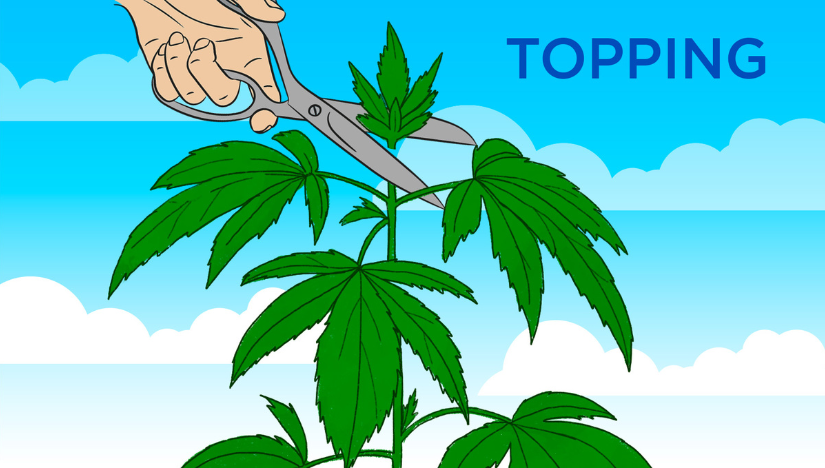
Once the plant is topped, halt any further trimming for about two weeks allowing the plant to heal. If the plant is not allowed enough time to recover from the open wound before the next trim, it can cause severe stress to the plant which ultimately leads to diminished yields.
2. Remove Lower Leaves
Lollipopping is a pruning technique that removes the bottom leaves and branches that do not receive enough sunlight for flower development. These lower hanging branches struggle with growth and will never yield and significant flowers, but they still deplete the growth energy of the plants. By removing these branches that are not vital for flower production the plants have more energy to direct to the branches that going to carry the majority of flowers.
3. Lower plant density in the middle of the plant
This is a pretty simple process, it involves removing all leaves inside the bush. The rule of thumb here is to remove and fan leaves that do not get exposed to light because they are located near the center of the plant. Removing these leaves also opens up the plant for airflow which lowers the risk of diseases.
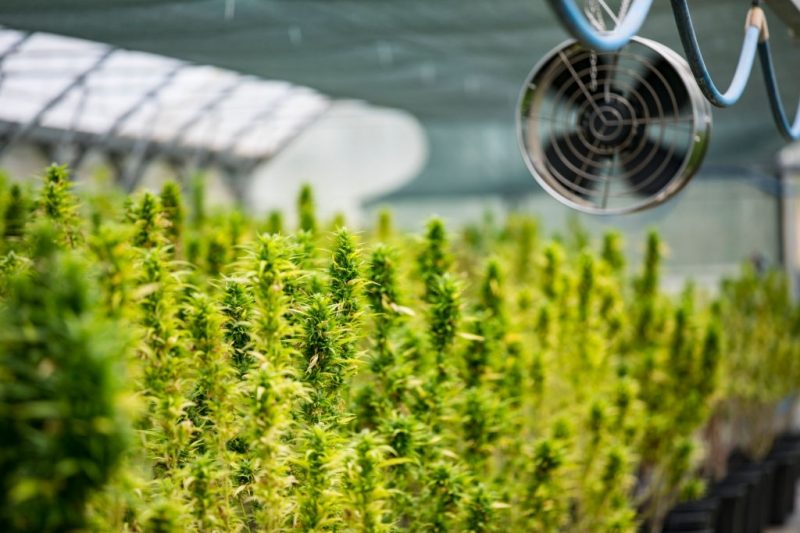
Once the plant density is thinned out, look for branches and leaves growing into other plants and may cause injury or create a breeding ground for bacteria due to rubbing.
4. Trim all dying and disease infections
This pruning technique can be used more often but still sparingly to prevent overloading the plant’s stress response. Simply remove all dead or decaying leaves regardless of the reason for dying. Removing disease-infected leaves can help slow down the speed of infection rate or in the same cases completely rid of it. Removing diseased tissue prevents the plant from sending valuable growth energy to rotten parts.


